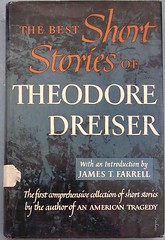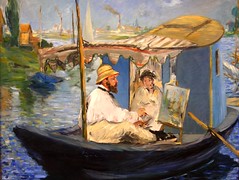AMSCO United States History 2015 Edition, Chapter 18 The Growth of Cities and American Culture, 1865-1900
| 8817745762 | old immigrants | Through the 1880s, they came to the United States from northern and western Europe. They were mostly Protestant and had a high-level of literacy. (p. 361) |  | 0 |
| 8817745763 | new immigrants | From the 1890s to 1914, they came to the United States from southern and eastern Europe. Mostly non-Protestant, poor and illiterate. (p. 361) |  | 1 |
| 8817745765 | Chinese Exclusion Act of 1882 | It was the first bill regarding immigration. It placed a ban on all new immigrants from China. (p. 362) |  | 2 |
| 8817745768 | American Protective Association | A nativist society that was prejudiced against Roman Catholics. (p. 362) |  | 3 |
| 8817745769 | Ellis Island 1892 | An immigration center opened in 1892 in New York Harbor. (p. 362) |  | 4 |
| 8817745770 | melting pot vs. cultural diversity | The historian's term, melting pot, refers to immigrants leaving their old-world characteristics and adopting the United States characteristics. Other historians argue that first-generation immigrants maintained their cultural identity and only the second and third generations were assimilated in the U.S. society. (p. 373) |  | 5 |
| 8817745774 | tenements, poverty | As rich people left residences near the business district, the buildings were often divided into small crowded windowless apartments for the poor. (p. 363) |  | 6 |
| 8817745775 | ethnic neighborhoods | Different immigrant groups created distinct neighborhoods where they could maintain their distinct identity. (p. 363) |  | 7 |
| 8817745776 | residential suburbs | By 1900, suburbs had grown up around every major U.S. city. the United States became the world's first suburban nation. (p. 364) |  | 8 |
| 8817745778 | Tammany Hall | A political machine in New York City, which developed into a power center. (p. 364) |  | 9 |
| 8817745780 | City Beautiful movement | In the 1890s, this movement included plans to remake America's cities with tree-lined boulevards, public parks, and public cultural attractions. (p. 364) |  | 10 |
| 8817745781 | Henry George | A San Francisco journalist who authored "Progress and Poverty" in 1879 that called to attention the failings of laissez-faire capitalism along with the wealth polarization caused by industrialization. (p. 365) |  | 11 |
| 8817745782 | Edward Bellamy | In 1888, he wrote "Looking Backward", a popular book of social criticism that that envisioned a future that had eliminated poverty, greed, and crime. (p. 365) |  | 12 |
| 8817745783 | Jane Addams | In 1889, she started Hull House in Chicago, which was a settlement house which provide help to immigrants. (p. 365) |  | 13 |
| 8817745784 | settlement houses | They provide social services to new immigrants. (p. 365) |  | 14 |
| 8817745785 | Social Gospel | In the 1880s and 1890s this movement espoused social justice for the poor based on Christian principles. (p. 365) |  | 15 |
| 8817745786 | Walter Rauschenbusch | The leading figure of the Social Gospel movement, and a New York City minister. (p. 365) |  | 16 |
| 8817745793 | Antisaloon League | In 1893, this organization became a powerful political force and by 1916 had persuaded twenty one states to close down all saloons and bars. (p. 367) |  | 17 |
| 8817745794 | Carrie Nation | She raided saloons and smashed barrels of beer with a hatchet. (p. 367) |  | 18 |
| 8817745802 | Clarence Darrow | A famous lawyer, he argued that criminal behavior could be caused by an environment of poverty, neglect, and abuse. (p. 368) |  | 19 |
| 8817745803 | W.E.B. Du Bois | A leading black intellectual, he advocated for equality for blacks, integrated schools, and equal access to higher education. (p. 368) |  | 20 |
| 8817745805 | Mark Twain | The first great realist author, he is famous for his classic "The Adventures of Huckleberry Finn". (p. 369) |  | 21 |
| 8817745806 | Stephen Crane | He wrote in the 1890s about the human condition. His books included "Maggie: A Girl in the Streets" and the "Red Badge of Courage". (p. 369) |  | 22 |
| 8817745808 | Theodore Dreiser | The author of "Sister Carrie". Notable for its naturalism and controversy, as it ran contrary to the moral undercurrents of 1900. (p. 369) |  | 23 |
| 8817745811 | Impressionism | A painting technique that originating in France. (p. 370) |  | 24 |
| 8817745816 | abstract art | Non-representational art, not accepted by Americans until the 1950s. (p. 370) |  | 25 |
| 8817745818 | Romanesque style | This architecture style featured massive stone walls and rounded arches. (p. 370) |  | 26 |
| 8817745819 | Louis Sullivan | He rejected historical architecture and focused on tall, steel-framed office buildings. He focused on building a form that followed function. A member of the Chicago School. (p. 370) |  | 27 |
| 8817745820 | form follows function | The form of the building flowed from its function. (p. 370) |  | 28 |
| 8817745821 | Frank Lloyd Wright | The most famous architect of the 20th century, he developed an organic style that made his buildings fit in with their natural surroundings. (p. 370) |  | 29 |
| 8817745822 | organic architecture | An architectural style in which the building was in harmony with its natural surroundings. (p. 370) |  | 30 |
| 8817745823 | Frederick Law Olmsted | The originator of landscape architecture, he designed Central Park and grounds of the U.S. Capitol. (p. 371) |  | 31 |
| 8817745830 | Joseph Pulitzer | He established the first newspaper to exceed over one million in circulation by filling it with sensational stories of crime and disaster. (p. 317) |  | 32 |
| 8817745831 | William Randolph Hearst | A newspaper publisher whose introduction of large headlines and sensational reporting changed American journalism. (p. 371) |  | 33 |

